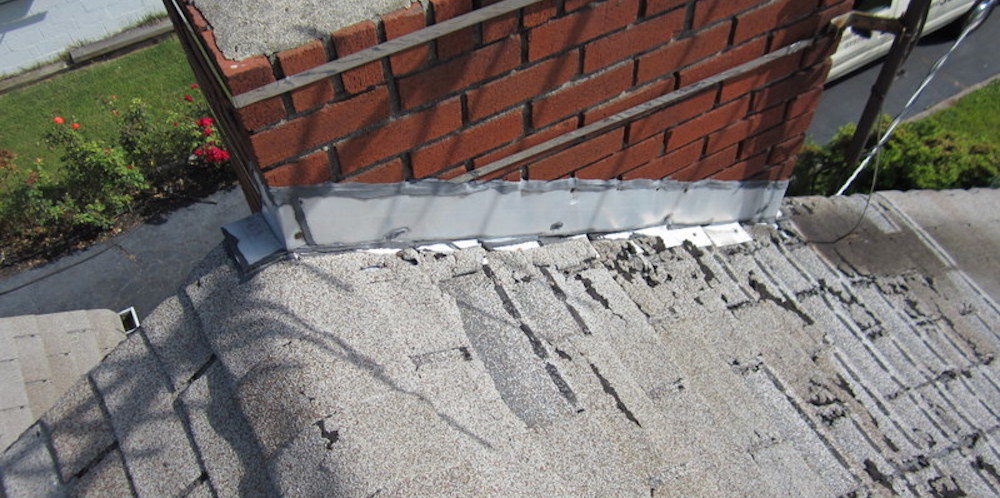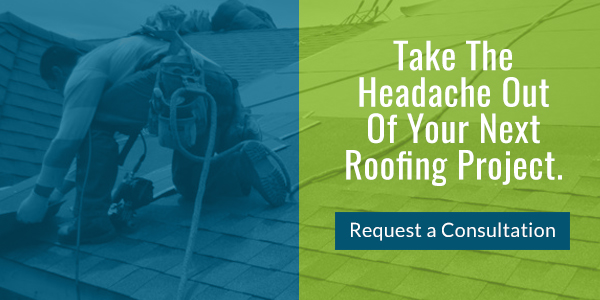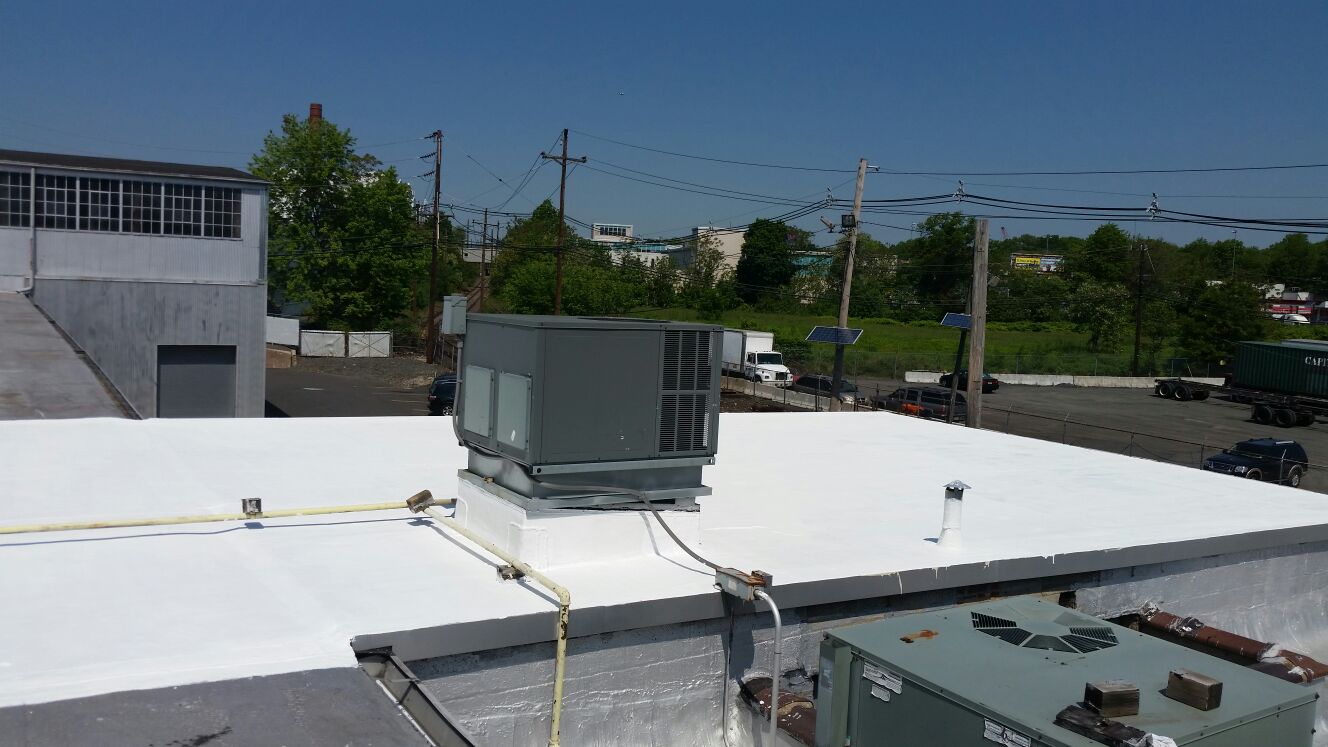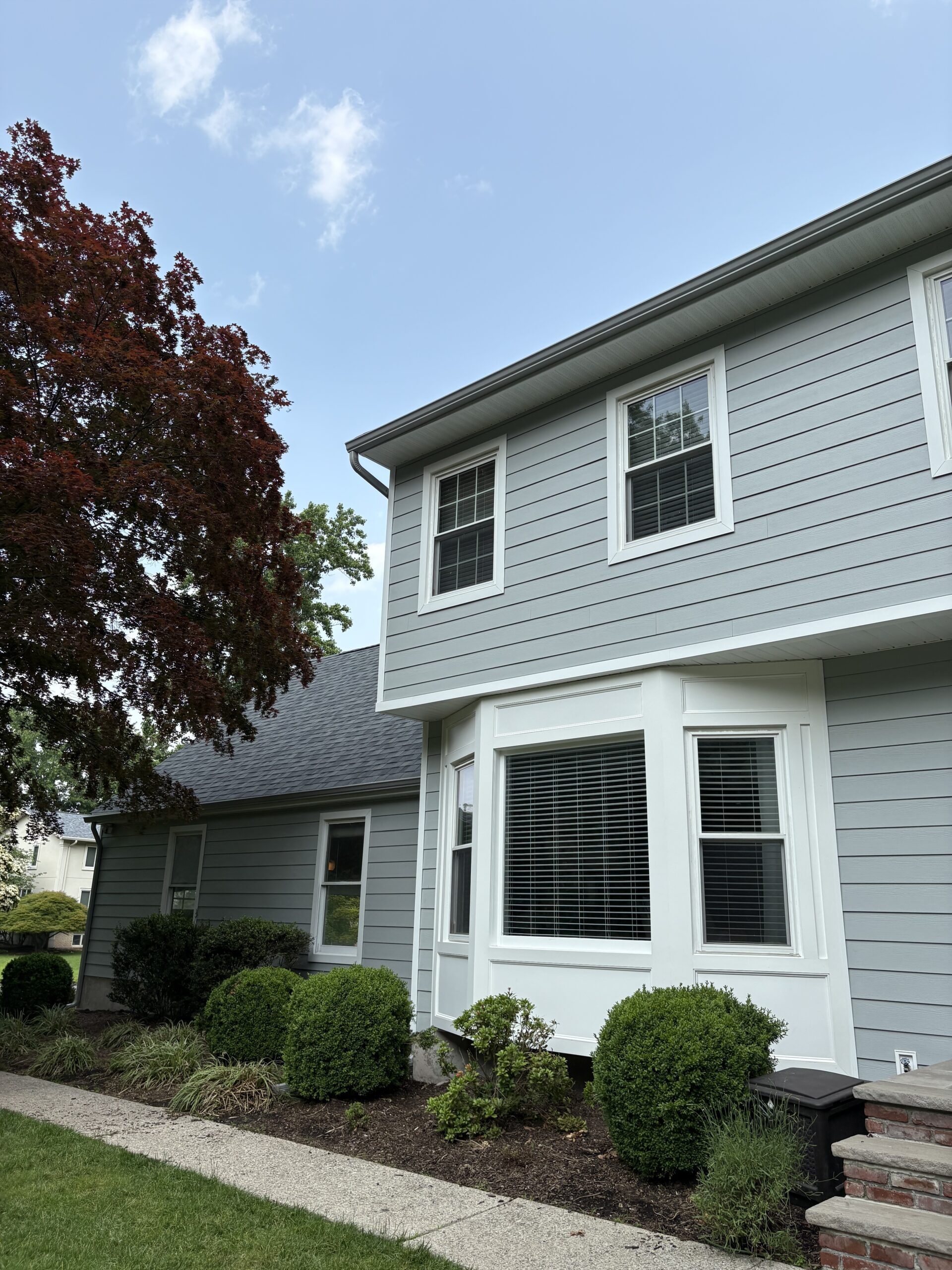Real expertise is usually needed to detect roof leaks. Moisture intrusion may occur at many places on a residential roof. There are numerous reasons why homeowners need roof leak repair in NJ. Some common causes of roof leaks include:
- Missing or damaged shingles
- Damaged flashing
- Protruding nails
- Clogged gutters
- Cracked vent boots
- Skylight seal failures
There are also weather-related roof leaks due to high winds, fallen branches, hail, heavy snow accumulations and ice dams.
Water often travels laterally or diagonally before it appears in the form of a stain on an interior surface. Often, the trained eye of a certified inspector is necessary to connect the leak to its source. A skilled roof inspector can efficiently identify the problem.
Roof Leak Repair: Step-by-Step Directions
There are five simple steps to diagnosing and repairing a roof leak, from contacting a roofing company to completing the repair.
1. Contact a Contractor/Inspector
When you need a roof leak repair in NJ, don’t panic! The most important thing you can do is to promptly pick up the phone and make a call to a reputable local roofing contractor. During the call, provide as much detail as possible as you describe the problem.
Resist the urge to climb up on your roof in search of the leak. One slip on a wet spot could prove catastrophic. There are numerous safety hazards that only experienced roofers should try to cope with. Leak detection is often a tricky business because the source of the leak may be nowhere near the water stain or wet spot. However, a roof inspector with a keen eye can correctly identify leak sources.
When a leak appears, don’t procrastinate! Delays are often expensive because small leaks can lead to big problems. Over time, rotted wood framing and sheathing, wet attic insulation and damaged drywall are all possible. Sometimes, mold growth leads to a need for pricy mold remediation services.
2. Show the Inspector the Leak
When the roof inspector arrives, take him to the area where the leak appeared. In order to identify the source of the leak, he’ll usually climb up on the roof, look in the attic and examine the room where evidence of the leak appears. A capable inspector will arrive with any equipment he may require, including a ladder.
3. Determine the Right Course of Action
Once the roof inspector has diagnosed the problem, he’ll report his findings to you. Sometimes a leak is due to a single, isolated source that can be easily repaired. However, some leaks are symptomatic of a more widespread issue like an aging roof or improper installation. In such instances, spot repairs may not address the underlying problem. Curling shingles, for example, are sometimes evidence of a roof nearing the end of its lifespan.
When more widespread repairs are necessary, a homeowner should carefully weigh the advantages and disadvantages of spot repairs versus re-roofing. At some point, it is more cost-effective to re-roof than to pay for recurring repairs.
In all situations, expert, unbiased advice from a qualified roofer can help a homeowner decide on the best course of action.
4. Consider an insurance claim
A roof leak repair is occasionally covered by insurance. Although roof leaks due to normal wear and tear are not covered, those that result from what insurance companies call a “covered peril” are. Windstorms and severe hail are examples of covered perils.
The filing of an insurance claim may be justified when the cost of the repair significantly exceeds the amount of your deductible. A certified roof inspector with proper experience should be willing and able to help you through the insurance claim process.
5. Complete the repair
When a roof leak is traced to a specific fault like a missing shingle, broken flashing or a protruding nail, the repair is pretty straightforward. Problems involving roof protrusions like chimneys, vents, and skylights are also often relatively simple to diagnose and repair.
However, some roof leak repairs in NJ require the removal and replacement of multiple layers of roofing, including shingles, felt and sheathing. Leaks that go undetected for lengthy periods may soften the sheathing or cause other damage to the roof’s substructure. Keep in mind that leaks from chimney damage or deterioration may require the services of a chimney specialist.
Once a roof leak repair in New Jersey is complete, a reputable local contractor will typically warranty the workmanship for a specified period.
Contact CRS Today
CRS is an experienced local roofer you can trust. Since 1977, we’ve delivered expert roofing solutions to homeowners in Bergen County, New Jersey, and beyond. Our motto for roof replacements and roof leak repairs in New Jersey is simple and straightforward, “Do it once and do it right.”
We are a full-service roofing contractor certified by both GAF and Owens Corning, two of the largest roofing manufacturers in North America. Look to CRS for inspections, seasonal maintenance, emergency services, roof replacements and more.
We’d welcome the opportunity to resolve your roofing issue. To arrange for a visit from our certified roof inspector, please contact us today!






